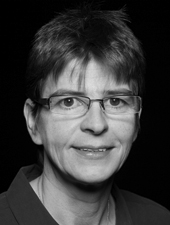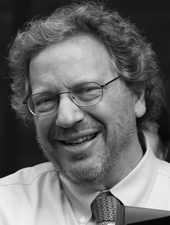Jung, V., Wei, W., Ballester, R., Camonis, J., Mi, S., Van Aelst, L., Wigler, M. H., Broek, D. (June 1994) Two types of RAS mutants that dominantly interfere with activators of RAS. Mol Cell Biol, 14 (6). pp. 3707-18. ISSN 0270-7306 (Print)
Preview |
PDF
Two types of RAS mutants.pdf Download (3MB) | Preview |
Abstract
In the fission yeast Schizosaccharomyces pombe, ras1 regulates both sexual development (conjugation and sporulation) and cellular morphology. Two types of dominant interfering mutants were isolated in a genetic screen for ras1 mutants that blocked sexual development. The first type of mutation, at Ser-22, analogous to the H-rasAsn-17 mutant (L. A. Feig and G. M. Cooper, Mol. Cell. Biol. 8:3235-3243, 1988), blocked only conjugation, whereas a second type of mutation, at Asp-62, interfered with conjugation, sporulation, and cellular morphology. Analogous mutations at position 64 of Saccharomyces cerevisiae RAS2 or position 57 of human H-ras also resulted in dominant interfering mutants that interfered specifically and more profoundly than mutants of the first type with RAS-associated pathways in both S. pombe or S. cerevisiae. Genetic evidence indicating that both types of interfering mutants function upstream of RAS is provided. Biochemical evidence showing that the mutants are altered in their interaction with the CDC25 class of exchange factors is presented. We show that both H-rasAsn-17 and H-rasTyr-57, compared with wild-type H-ras, are defective in their guanine nucleotide-dependent release from human cdc25 and that this defect is more severe for the H-rasTyr-57 mutant. Such a defect would allow the interfering mutants to remain bound to, thereby sequestering RAS exchange factors. The more severe interference phenotype of this novel interfering mutant suggests that it functions by titrating out other positive regulators of RAS besides those encoded by ste6 and CDC25.
| Item Type: | Paper |
|---|---|
| Uncontrolled Keywords: | Base Sequence Cloning Molecular Comparative Study Conjugation, Genetic Fungal Proteins biosynthesis/genetics Genes, Fungal Genes ras Genotype Molecular Sequence Data Mutagenesis Site-Directed Oligodeoxyribonucleotides Plasmids Restriction Mapping Saccharomyces cerevisiae genetics growth & development physiology Saccharomyces cerevisiae Proteins Schizosaccharomyces genetics growth & development physiology Schizosaccharomyces pombe Proteins Spores, Fungal genetics physiology ras Proteins |
| Subjects: | bioinformatics > genomics and proteomics > genetics & nucleic acid processing > DNA, RNA structure, function, modification > genes, structure and function > genes: types > RAS bioinformatics > genomics and proteomics > genetics & nucleic acid processing > DNA, RNA structure, function, modification > genes, structure and function > gene expression bioinformatics > genomics and proteomics > genetics & nucleic acid processing > DNA, RNA structure, function, modification > mutations organism description > yeast |
| CSHL Authors: | |
| Communities: | CSHL labs > Van Aelst lab CSHL labs > Wigler lab |
| Depositing User: | CSHL Librarian |
| Date: | June 1994 |
| Date Deposited: | 12 Apr 2012 18:09 |
| Last Modified: | 04 Nov 2016 20:03 |
| PMCID: | PMC358738 |
| Related URLs: | |
| URI: | https://repository.cshl.edu/id/eprint/26204 |
Actions (login required)
 |
Administrator's edit/view item |

